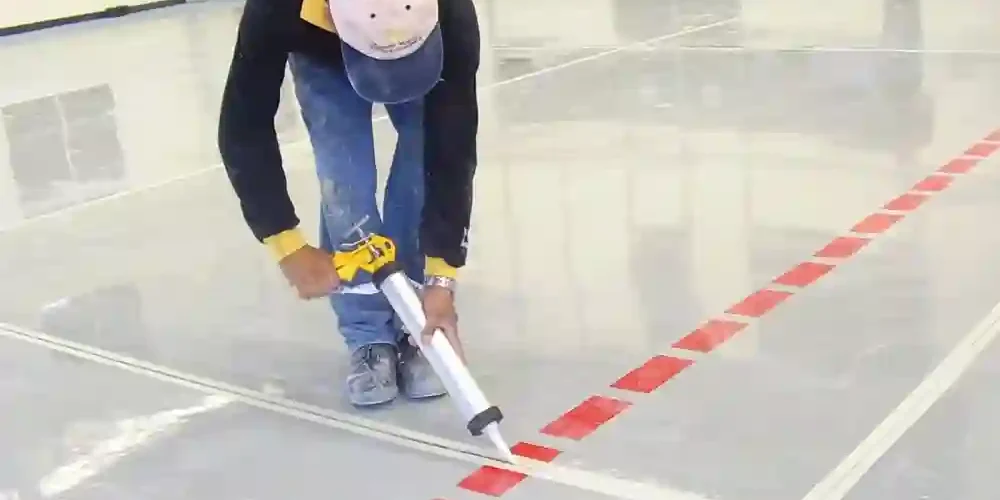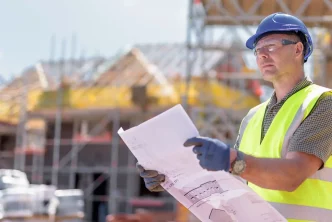Concrete is the backbone of construction across Sydney, whether it’s used in driveways, footpaths, car parks or large commercial developments. One element that’s often underestimated, yet vitally important, is concrete joint sealing. As a building professional who has seen the long-term effects of both proper and poor sealing practices, I can attest to its significance. In this comprehensive article, I will delve into why concrete joint sealing is crucial, especially in Sydney’s unique climate and urban environment, and how it ultimately saves money, enhances safety, and extends the lifespan of concrete structures.
1. Understanding Concrete Joint Sealing
Concrete joint sealing involves the installation of a flexible, water-resistant material into the gaps (or joints) between concrete sections. These joints are purposefully placed to allow for the natural movement of concrete due to thermal expansion and contraction, moisture changes, and settling of the structure. Sealing these joints prevents water, debris, and contaminants from entering the cracks, thereby preserving the integrity of the concrete.
Key Purposes:
- Moisture Protection: Prevents water penetration that can lead to freeze-thaw damage and deterioration.
- Structural Integrity: Helps maintain the bond between adjacent concrete slabs.
- Debris and Insect Intrusion: Minimises the accumulation of debris, vegetation, and pests that can exacerbate joint degradation.
- Aesthetic Appeal: Maintains a clean, uniform appearance, which is essential in commercial and residential settings.
2. The Unique Sydney Climate and Its Impact on Concrete
Sydney’s climate is characterised by warm, humid summers and cool, wet winters. This fluctuating climate means that concrete structures in the region are continuously subjected to thermal cycling and moisture variations. Over time, these conditions can cause expansion, contraction, and even cracking if not properly managed.
Thermal Expansion and Contraction: Concrete naturally expands when heated and contracts when it cools. Without adequate joint sealing, these movements can create gaps that allow moisture and debris to infiltrate the concrete structure. In Sydney, where temperatures can vary dramatically over the course of a day or season, joint sealing becomes indispensable in accommodating this movement without compromising the structural integrity.
Moisture and Humidity: High humidity levels, particularly during the rainy season, mean that moisture can seep into unsealed joints. Water is one of the main culprits behind the degradation of concrete, as it promotes the growth of algae and mould, and in colder conditions, can lead to freeze-thaw cycles that crack the surface. Sealed joints act as a barrier, keeping moisture at bay and protecting the concrete from these damaging cycles.
3. Enhancing Structural Durability
Concrete joint sealing plays a critical role in preserving the long-term durability of a structure. Without effective sealing, water and other contaminants can penetrate the concrete, leading to corrosion of any embedded steel reinforcement. Over time, this can cause the concrete to weaken, compromising the safety of the entire structure.
Corrosion Prevention: Reinforcement bars, or rebars, are embedded in concrete to provide tensile strength. If water penetrates the joints, it can reach these bars, leading to rust and eventual corrosion. Corroded rebar expands, causing internal pressure that can lead to cracking and spalling of the concrete. By sealing the joints, we prevent water ingress, thereby protecting the rebar and maintaining the strength of the concrete.
Preventing Freeze-Thaw Damage: Although Sydney rarely experiences prolonged freezing temperatures, the occasional cold snap during winter can cause water within unsealed joints to freeze. When water freezes, it expands, putting stress on the surrounding concrete. This can result in cracking or even complete structural failure over time. Sealed joints offer a critical line of defence against such freeze-thaw cycles.
4. Cost Efficiency and Maintenance Benefits
Investing in quality concrete joint sealing is not just about upfront costs—it’s a long-term financial decision. Poorly sealed joints can lead to extensive repairs and even premature replacement of concrete structures. In contrast, effective joint sealing minimises maintenance expenses and extends the life of a construction project.
Reduced Repair Costs: Cracks and spalling can be extremely costly to repair. When water infiltrates unsealed joints, the resulting damage can lead to structural issues that demand expensive and time-consuming remedial work. By installing a robust joint sealing system, building owners can avoid these unforeseen repair costs and reduce the overall lifecycle cost of the structure.
Lower Maintenance Frequency: Well-sealed joints mean fewer maintenance interventions are required. This is particularly important in high-traffic areas such as car parks, footpaths, and commercial complexes, where frequent repairs can disrupt operations. A properly sealed joint system not only enhances the durability of the concrete but also ensures that maintenance teams can focus on routine inspections rather than emergency repairs.
5. Aesthetics and Urban Appeal
In Sydney’s competitive property market, the visual appeal of a building is crucial. Cracked or deteriorated concrete can significantly detract from a building’s aesthetic value. Proper joint sealing provides a neat, finished look that enhances both the function and appearance of a structure.
Uniform Appearance: Visible cracks and gaps can make concrete surfaces look neglected and poorly maintained. In commercial settings, where first impressions matter, this can impact the perceived quality of the building. A well-sealed joint ensures that the concrete remains visually appealing, contributing to the overall image of the property.
Increased Property Value: Buildings that are well-maintained and show few signs of wear and tear typically command higher market values. Property investors and building owners in Sydney understand that preserving the aesthetics of a building through effective maintenance practices, including joint sealing, is an investment in the property’s long-term value.
6. Addressing Common Challenges in Joint Sealing
While the benefits of joint sealing are clear, there are also challenges that need to be addressed to ensure its effectiveness. Understanding these issues can help building professionals make informed decisions about materials and installation techniques.
Material Selection: Choosing the right sealing material is critical. Options range from traditional cementitious sealants to modern silicone or polyurethane-based systems. The chosen material must be flexible enough to accommodate the natural movement of the concrete, yet durable enough to resist abrasion, UV radiation, and chemical exposure. In Sydney’s climate, where both heat and moisture are prevalent, selecting a sealant that performs well under these conditions is essential.
Installation Techniques: Even the best materials can fail if not installed correctly. Proper surface preparation is crucial to ensure that the sealant bonds effectively with the concrete. This includes cleaning the joint, removing any debris, and sometimes applying a primer to enhance adhesion. Skilled labour is also necessary, as improper installation can lead to premature failure of the joint sealing system.
Environmental Considerations: Sydney’s urban environment poses its own set of challenges. Air pollution, acid rain, and vehicular emissions can all contribute to the degradation of concrete surfaces. A well-executed joint sealing program provides a protective barrier against these environmental factors, helping to maintain the integrity of the concrete over time.
7. The Role of Professional Expertise
As a building professional, I’ve seen firsthand that the success of concrete joint sealing is heavily reliant on both material quality and installation expertise. Relying on reputable suppliers and experienced contractors can make a significant difference in the performance and longevity of sealed joints.
Quality Assurance: Quality control starts with selecting the right products from trusted manufacturers. The Australian market offers a range of high-performance sealants designed specifically for the challenges posed by local conditions. By using products that have been tested and proven in similar environments, building professionals can ensure that their projects are built to last.
Skilled Application: Even the most advanced sealant will fail if it is not applied correctly. Training and experience are key to achieving a perfect seal. It’s important for contractors to understand the nuances of the materials they are working with and to adhere to best practices in surface preparation and application. Regular training and certification can help maintain high standards in the industry.
8. Future-Proofing Sydney’s Infrastructure
As Sydney continues to grow, the demand for durable, low-maintenance infrastructure is higher than ever. Concrete joint sealing is an essential component in the future-proofing of our city’s built environment. By incorporating state-of-the-art sealing solutions in new developments, we can ensure that our infrastructure remains resilient in the face of increasing urban pressures and environmental challenges.
Sustainability Considerations: Modern joint sealing materials are not only more durable but also more environmentally friendly. Many manufacturers are now offering products with low volatile organic compounds (VOCs) and sustainable production practices. This shift towards greener products aligns with Sydney’s broader goals of reducing the environmental footprint of construction projects.
Resilience Against Natural Disasters: While Sydney is not prone to extreme natural disasters on the scale seen in other parts of the world, the city is not immune to events such as heavy storms and flooding. A robust joint sealing system can play a critical role in mitigating the impact of these events. By preventing water ingress and subsequent damage, sealed joints help to maintain the structural integrity of buildings even under adverse conditions.
Longevity and Lifecycle Management: In an era where building sustainability and lifecycle management are paramount, investing in quality joint sealing is a forward-thinking decision. It ensures that the initial construction investment is protected over decades, reducing the need for disruptive and costly repairs. For property owners and managers, this translates into lower operational costs and a higher return on investment over the building’s lifespan.
9. Case Studies and Real-World Applications
Numerous projects have demonstrated the effectiveness of proper concrete joint sealing in Sydney. From large commercial developments in the CBD to residential projects in the suburbs, successful applications of joint sealing have resulted in longer-lasting, more resilient structures.
Commercial Developments: In busy commercial areas, where the wear and tear on concrete surfaces is considerable, sealed joints have proved invaluable in maintaining a pristine appearance while withstanding heavy traffic. The durability of these systems has reduced maintenance intervals and improved overall operational efficiency.
Residential Projects: Homeowners and residential builders are also increasingly recognising the importance of joint sealing. In modern suburban developments, where aesthetic appeal is as essential as functionality, well-sealed joints contribute to the longevity of driveways, pathways, and outdoor living spaces.
Public Infrastructure: Municipal projects, such as footpaths and public spaces, have benefited significantly from proper joint sealing. Not only does it enhance the safety of these areas by reducing the risk of trip hazards due to uneven surfaces, but it also ensures that public funds are used efficiently by minimising repair and maintenance costs over time.
10. Practical Tips for Ensuring Effective Joint Sealing
For building professionals looking to maximise the benefits of concrete joint sealing in Sydney, here are some practical tips:
- Plan Ahead:
Ensure that joint sealing is factored into the design phase of the project. Early planning can help determine the appropriate joint spacing, size, and sealing material needed for optimal performance. - Select the Right Material:
Research and choose sealants that are specifically designed for the local climate. Look for products with proven track records in similar environmental conditions and check for relevant certifications. - Emphasise Surface Preparation:
The longevity of any sealant depends on proper surface preparation. Clean and dry joints are essential for good adhesion. Remove any old sealant, dust, or debris before applying a new layer. - Use Skilled Labour:
Hiring experienced contractors who are well-versed in the latest installation techniques can make a significant difference in the outcome. Regular training and adherence to best practices are key to ensuring a durable seal. - Regular Inspections:
Even the best systems require occasional checks. Implement a routine maintenance and inspection schedule to identify any early signs of wear or damage, and address them before they develop into larger issues. - Stay Informed:
The field of construction is constantly evolving. Keep up to date with the latest research, technological advancements, and best practices in joint sealing to ensure that your projects utilise the most effective solutions available.
Conclusion
In the competitive and ever-evolving construction landscape of Sydney, concrete joint sealing is far more than just a finishing touch—it’s an essential component that protects and preserves our built environment. From mitigating the effects of thermal expansion and moisture infiltration to enhancing structural integrity and reducing long-term maintenance costs, joint sealing offers benefits that resonate on both an economic and practical level.
Investing in high-quality materials and skilled installation methods ensures that the challenges posed by Sydney’s climate are met head-on. As we continue to develop and modernise our urban infrastructure, concrete joint sealing remains a key strategy in ensuring that our buildings, public spaces, and commercial developments stand the test of time. For building professionals, homeowners, and property managers alike, the importance of proper joint sealing cannot be overstated—it is a small detail that makes a huge difference in the longevity, safety, and overall appeal of our concrete structures.
By understanding the principles behind joint sealing, recognising the challenges presented by Sydney’s unique environment, and implementing best practices in material selection and installation, we can all contribute to creating a more durable, sustainable, and visually appealing built environment. The next time you walk past a well-maintained car park or admire a beautifully finished concrete pathway, remember that behind that smooth surface lies the critical work of effective joint sealing—a testament to the attention to detail that goes into building Sydney’s future.





